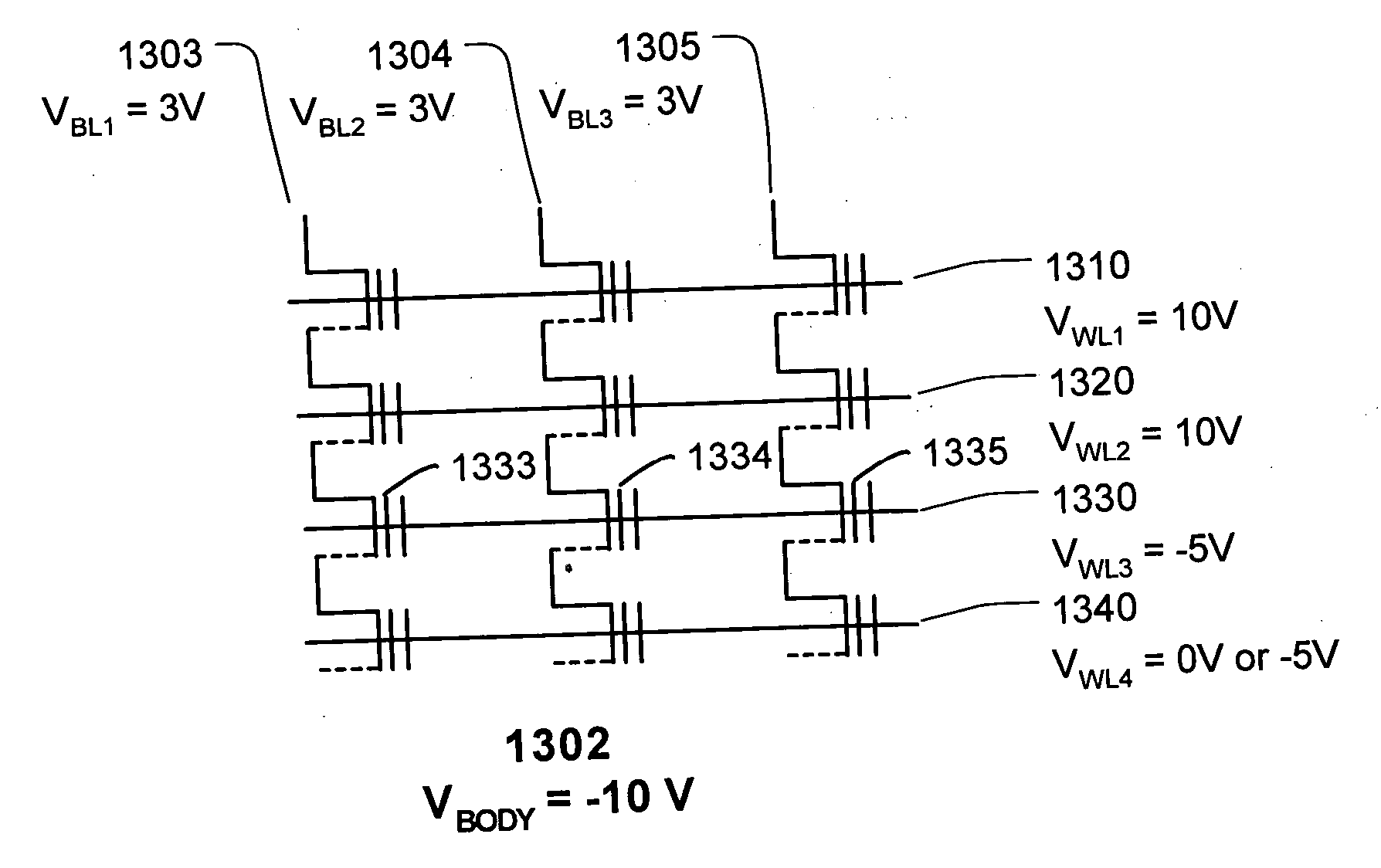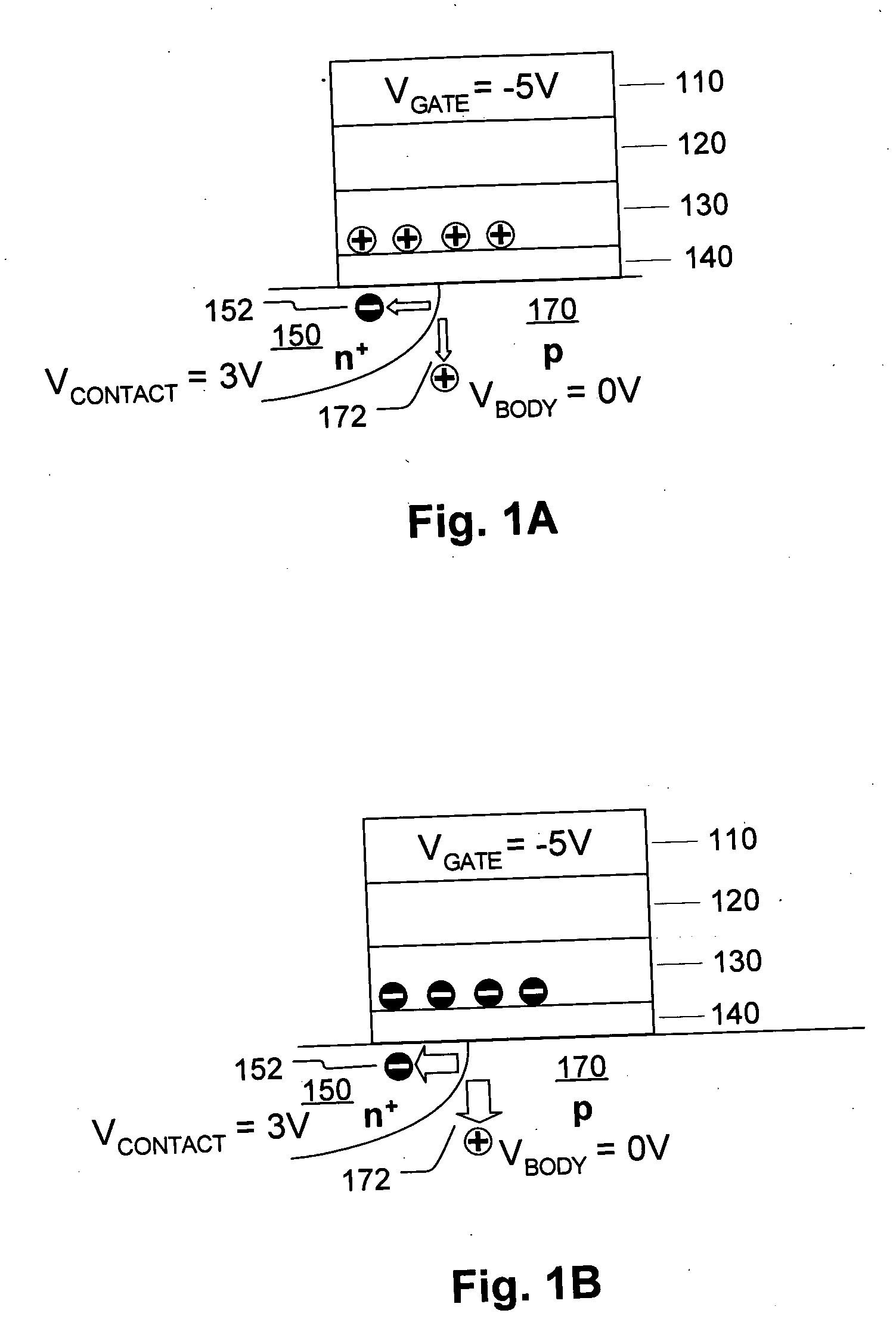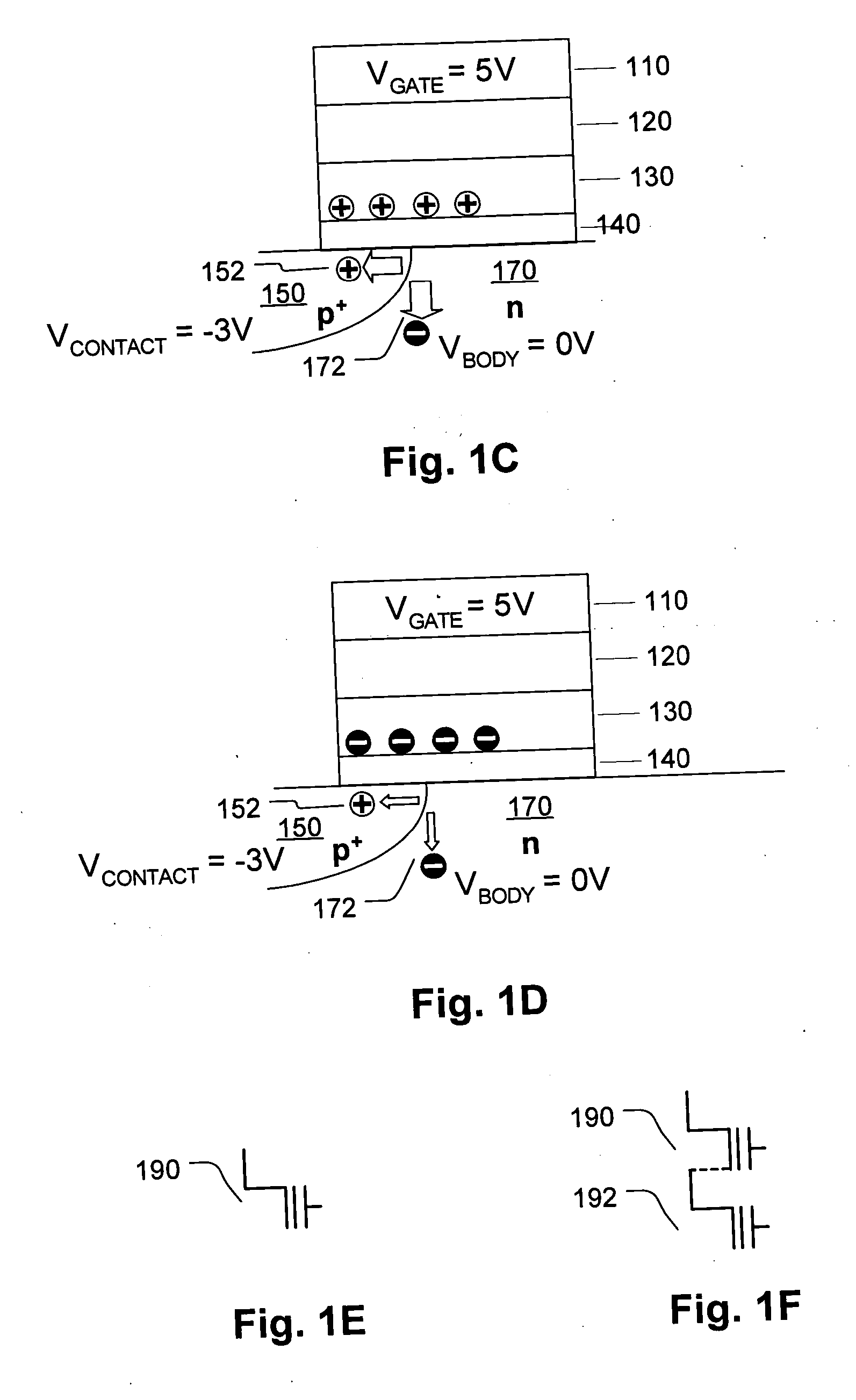Method and apparatus for operating a non-volatile memory array
- Summary
- Abstract
- Description
- Claims
- Application Information
AI Technical Summary
Benefits of technology
Problems solved by technology
Method used
Image
Examples
Embodiment Construction
[0056]FIG. 1A and FIG. 1B are simplified diagrams of a charge trapping memory cell, showing a read operation with a negative voltage on the gate being performed on a charge trapping structure. In FIG. 1A, the charge trapping structure has a charge storage state with relatively more net positive charge than in FIG. 1B. The charge trapping memory cell of FIG. 1A and FIG. 1B has a p-doped body region 170 and an n+-doped contact region 150. The remainder of the memory cell includes a bottom dielectric structure 140 (bottom oxide) on the body region 170, a charge trapping structure 130 on he bottom dielectric structure 140, a top dielectric structure 120 (top oxide) on the charge trapping structure 130, and a gate 110 on the oxide structure 120. Representative top dielectrics include silicon dioxide and silicon oxynitride having a thickness of about 5 to 10 nanometers, or other similar high dielectric constant materials, for example Al2O3. Representative bottom dielectrics include silico...
PUM
 Login to View More
Login to View More Abstract
Description
Claims
Application Information
 Login to View More
Login to View More - R&D
- Intellectual Property
- Life Sciences
- Materials
- Tech Scout
- Unparalleled Data Quality
- Higher Quality Content
- 60% Fewer Hallucinations
Browse by: Latest US Patents, China's latest patents, Technical Efficacy Thesaurus, Application Domain, Technology Topic, Popular Technical Reports.
© 2025 PatSnap. All rights reserved.Legal|Privacy policy|Modern Slavery Act Transparency Statement|Sitemap|About US| Contact US: help@patsnap.com



